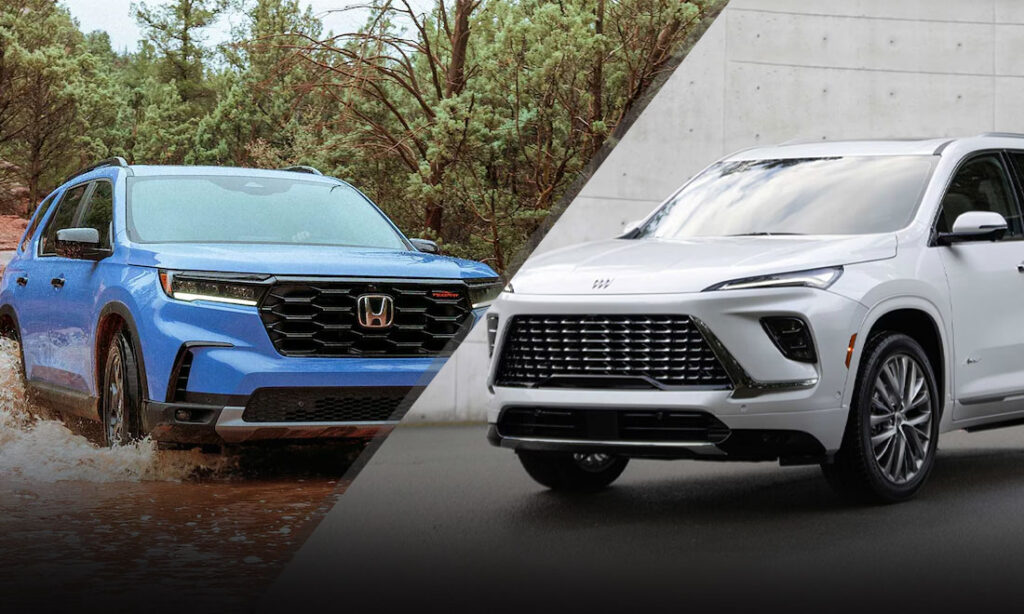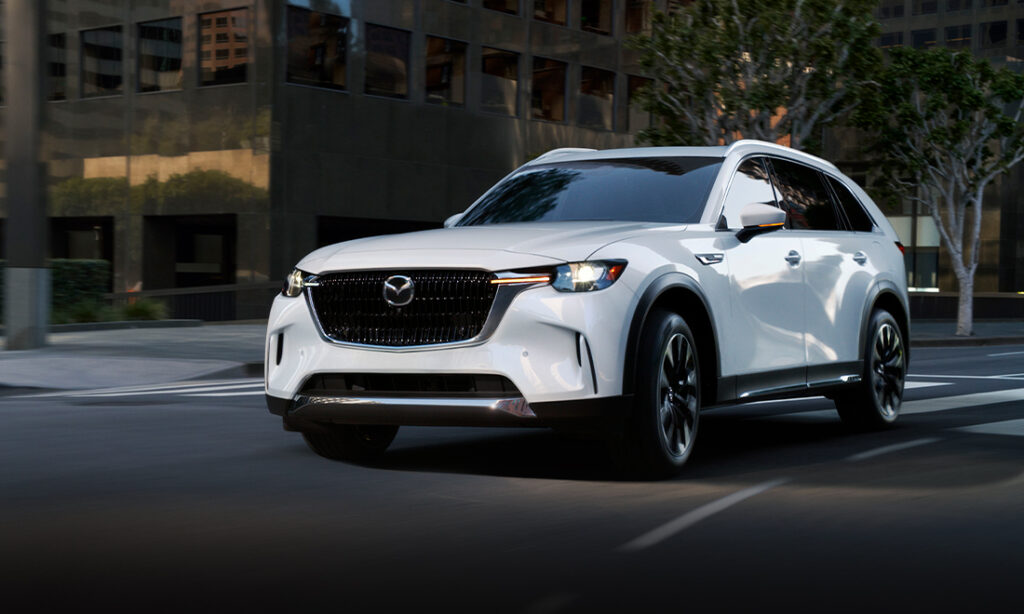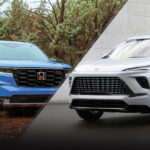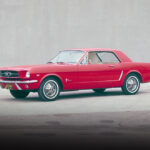Budget Buy: G-Wagon vs Land Cruiser
The Mercedes-Benz G-Class vs the Toyota Land Cruiser. We look at the cost, features, and options in the legendary G-Wagon and Land Cruiser.
Swagger Wagon: G-Class vs Land Cruiser
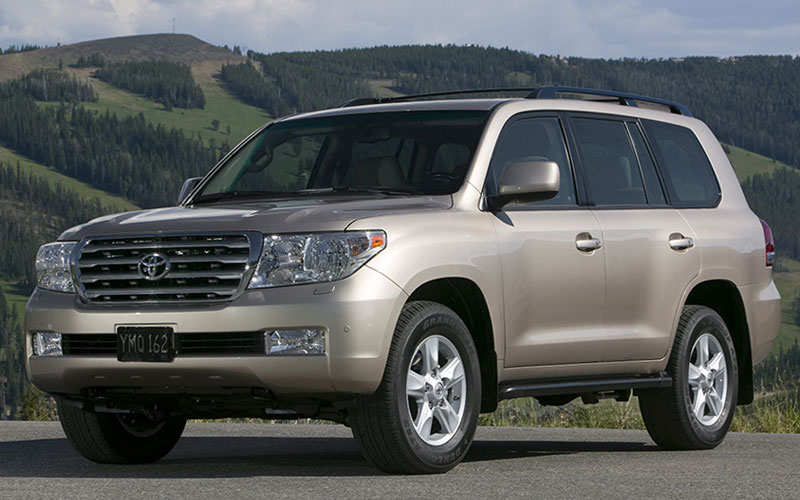
It’s not common for us to compare a Mercedes product with a Toyota product. But there is one special case where the two disparate lineups overlap and that is in the realm of gas guzzling, off-road warriors. The Mercedes-Benz G-Class and the Toyota Land Cruiser might at first blush appear to be very different vehicles, and from a sensibility standpoint they are, but there is also a lot these two iconic SUVs have in common.
First and foremost, there is desirability. Both the G-Wagon and the Land Cruiser are highly sought-after vehicles, for vastly different reasons. The Mercedes gets shout outs in Post Malone songs and features prominently on NFL players’ Instagram feeds. The Land Cruiser, with its reputation as perhaps the most reliable 4WD vehicle ever, is the darling of overlanding hobbyists.
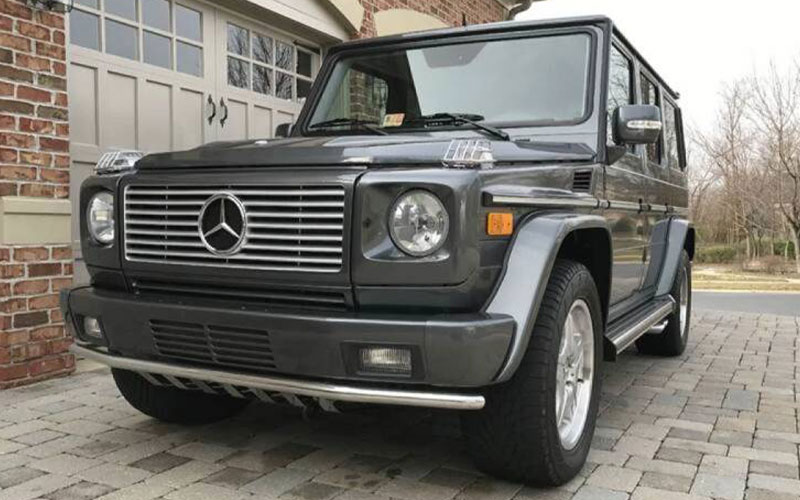
Second thing, these SUVs have in common is provenance; both began life as military vehicles. The Land Cruiser had its start in post-WWII Japan as an emulation of the original Jeep. The G-Class was conceived in the 1970s as both a military and civilian off-roader. The first military order came from the Shah of Iran in 1979, who, as you might guess, wasn’t ultimately able to take delivery.
The third thing they have in common is capability. Both of these SUVs are legit, rugged four-wheel drive beasts despite the luxury features (and luxury price tags). Sure, most G-Wagons aren’t fording rivers or tackling Moab, but they could.
Military Heritage and Off-Road Capability

A new Mercedes-Benz G-Class will run between $160-$200,000, though you can spend even more if you like on upgrades and special couch-built/tuned editions like the Brabus. The Toyota Land Cruiser isn’t cheap either. Though the new 2021 will be the final Land Cruiser in the US, it still carries a premium price of roughly $85,000.
Yes, despite the price gap, both are exceedingly expensive vehicles when purchased new. However, they are much more affordable once they’ve accrued some miles on the odometer. Balancing price and condition, we settled on a price range of $30-40,000 for our used G-Class and Land Cruiser. For the G-Class, that means a vintage of around 2005 or roughly 15-years old with around 100-150,000 miles.

For the Land Cruiser, this price range offers a lot more options. You can find really nice examples of restored J40 models (from the 1960s to 1980s) if you’re into vintage off-roaders. But, when comparing it with a 2005 G-Class, we stuck with the more modern J200 Land Cruiser generation that began in 2008. Here, you’ll quickly discover that Land Cruisers tend to carry a lot of miles. Owners have taken that reputation for durability and put it to the test, again and again, until they’ve racked up 200,000 and sometimes even 300,000 miles. Even at those ranges, the Land Cruiser demands a premium, with many still commanding prices well above $20,000.
G-Class vs Land Cruiser Specs
Land Cruiser

The 2008 J200 Toyota Land Cruiser came with just one engine option, a 5.7L naturally aspirated V8 making 381 horsepower and paired with a six-speed automatic with four-wheel drive. A big reason Land Cruisers carry their reputation for longevity is because of their simple, over-engineered, chain driven V8s. When buying them used, do note when and whether that timing chain has been replaced, it’s considered the Land Cruiser’s one weak link (and an easily addressed one at that).
The Land Cruiser was rated to tow up to 8,500lbs. Cargo room began with 16.1 cu. ft. behind the third row, 43 cu. ft. behind the second, and 81.7 cu. ft. in total.
G-Class
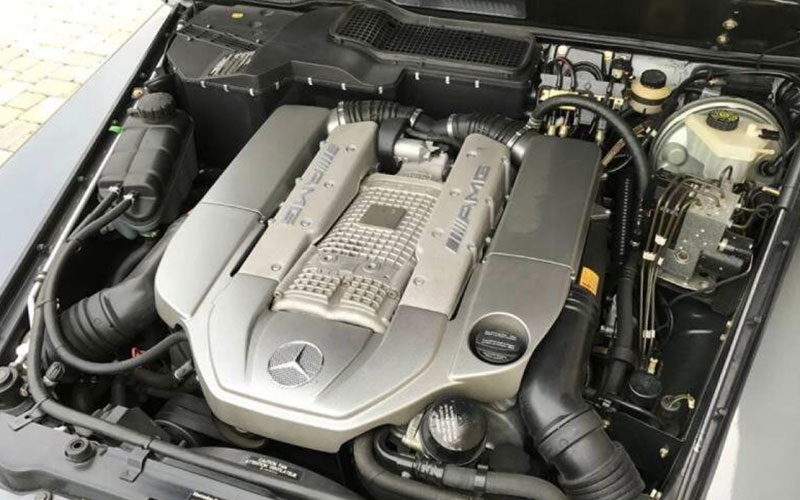
The 2005 G-Class offered two engine options. The first, which came in the G500, was a 5.0L V8 making 292 horsepower mated to a five-speed automatic with all-wheel drive. The second, in the G55 AMG, was a 5.5L supercharged V8 good for 469 horsepower. While both of these vehicles are heavy, the G-Class is lighter, with the Land Cruiser at 5,690lbs compared to the G-Class’s 5,540lbs. This and the AMG’s V8 make the G-Class the clear winner on the drag strip with a 0-60 sprint of approximately 6 second.
The G-Class was rated to tow up to 7,000lbs. Cargo in the G-Class started behind the second row with 45.2 cu. ft. and maxed out at 79.5 cu. ft.
Fuel economy is abysmal in both vehicles with 13 city / 14 highway mpg in the G-Class and 13 city / 18 highway mpg for the Land Cruiser. Those numbers, be warned, are wildly optimistic. Once you’ve filled them up with passengers and/or overlanding gear, expect somewhere closer to 10 mpg.
Driving & Performance
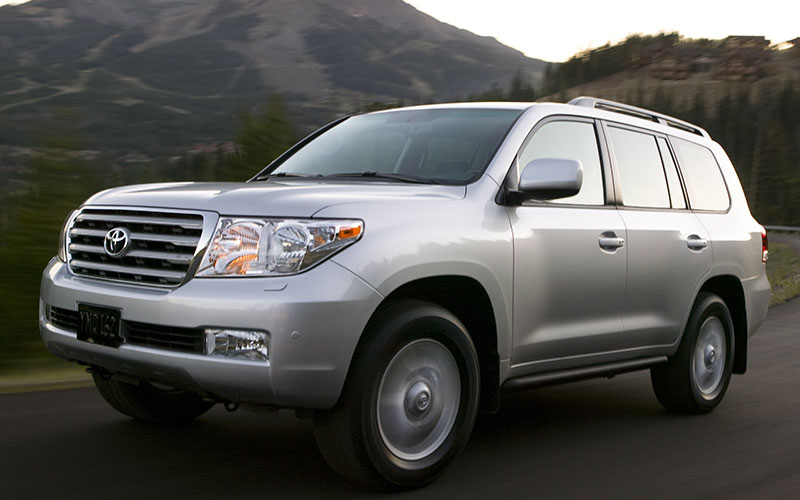
Though the G-Class might be faster in a straight line, neither of these vehicles are canyon carvers. Tall, ponderous, and heavy, they are true to their off-roader roots with unrefined road manners. Surprisingly, the Toyota ends up with the slightly smoother ride on pavement. The G-Class’s suspension is stiffer and a bit less forgiving. But then, it’s optimized for driving on the rough stuff.
The Land Cruiser is full time four-wheel drive with a center locking differential, three different crawl speeds, and solid axles. Land Cruisers are lauded the world over for racking up astronomical mileages on terrain far rougher than the typical American encounters on their weekly sojourn to Costco.

The G-Class will likewise make you vastly overprepared for your daily commute. But, if you’re planning to switch out those street tires for something knobbier, the G-Class won’t disappoint off-road. It too has solid axles, all-wheel drive in its case, and electronically-locking differentials.
Interior & Features
Land Cruiser
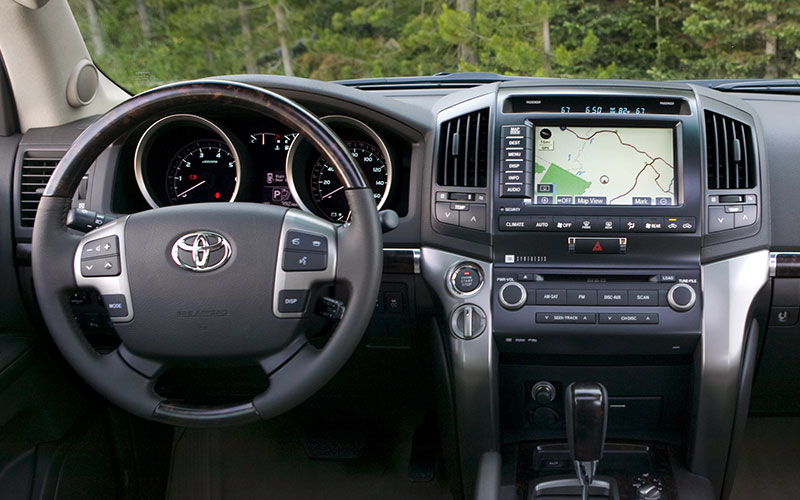
Though it doesn’t carry the same level of luxury cachet as the Mercedes, the Land Cruiser was, and remains, the top of the Toyota lineup and carries all sorts of luxury amenities as a result. The 2008 J200 Land Cruiser came with an 8-inch infotainment system complete with navigation (a bit dated by today’s standards, but still). Interesting perks included the center console refrigerator, heated front seats, and rear seat entertainment system. The Land Cruiser also offers three rows with seating for up to eight passengers. Materials are nice, with leather upholstery and plentiful wood trim.
G-Class
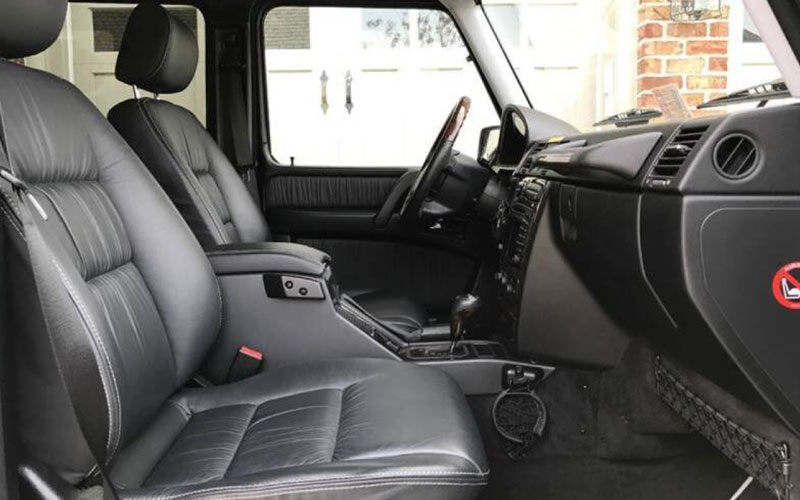
The current G-Class has gotten increasingly upscale on the inside, now roughly parallel with the E-Class in terms of finish. But back in 2005, much of the G-Class’s interior was borrowed from the C-Class. The interior is perhaps more upscale than the Land Cruiser’s, but the gap isn’t as pronounced as their contemporary counterparts. The G-Class too came with navigation, heated front seats, and a high-end 18-speaker Harmon Kardon stereo system. There’s wood and leather here too, with extra goodies like a heated steering wheel, and a sunroof.
Other Tangibles: Durability and Repair Costs
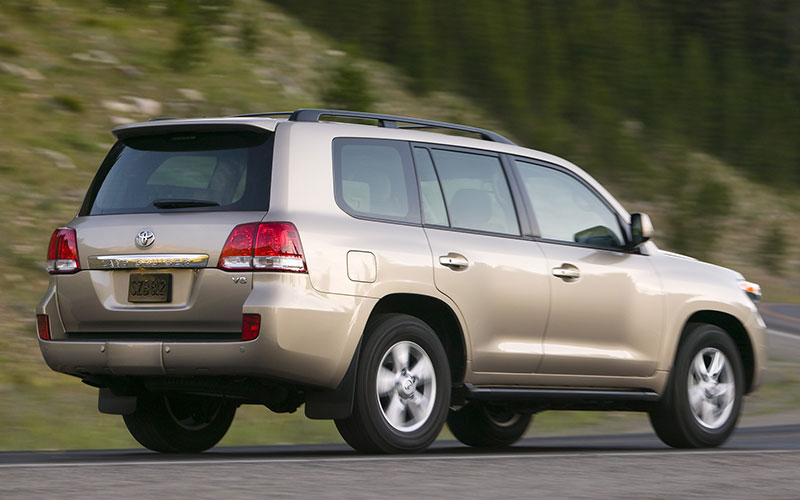
Conversely, outside of those overlanders and off-road enthusiasts, the cool and cultural cachet firmly lie with the G-Class. Rolling up to the middle school to drop off the kids, you’ll be the hippest soccer mom in town in your G-Wagon. And if you’re desperate to impress the jetsetters at the new firm, a used G-Wagon is just the ticket when you’re on a budget.
A good way to sum up the most significant difference between the 2005 G-Class and 2008 Land Cruiser is that, today, the 16-year old G-Class creaks and the 13-year old Land Cruiser, likely with 50-100,000 miles more on the odometer, doesn’t. The Land Cruiser just feels more solidly built. Even discounting the costs of fixing a 15-year old German luxury vehicle, which is substantial, the difference in the frequency of problems is even more substantial. Among Toyota products the Land Cruiser is the chief example of over-engineered, other-worldly levels of reliability. The G-Class, for as tough and ready to rumble as it is, just isn’t in the same league when it comes to durability.
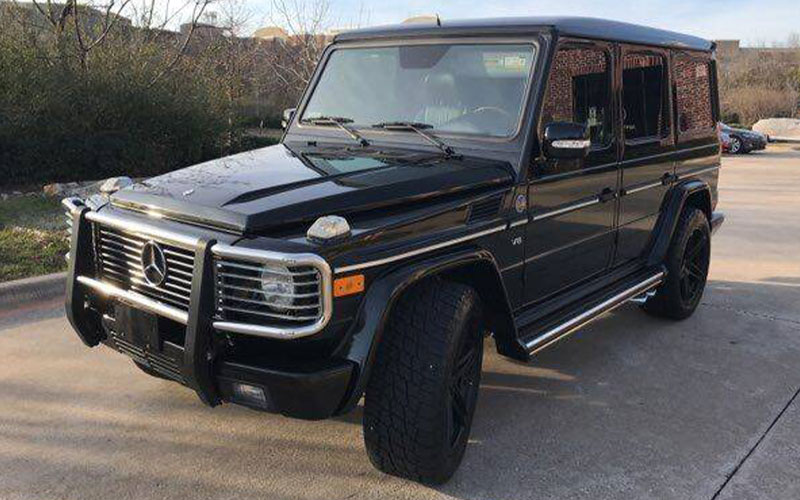
WINNER: Tie between the Mercedes-Benz G-Class and Toyota Land Cruiser
In the end, for all their similarities, the Toyota Land Cruiser and Mercedes-Benz G-Class are very different used vehicles. If you want an overland project vehicle, it’s the Land Cruiser by a rugged country mile. But if you want to be seen in the most stylish and speedy of used German SUVs, you can’t find better than the G-Class.


